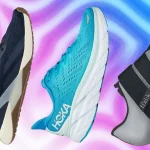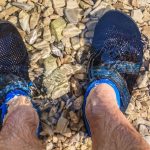It’s clear that we won’t be drawing up a comprehensive list of the perfect running shoe for all flat-footed people, because there is nothing definite about it and any person who tells you otherwise doesn’t know what they’re talking about – or is just trying to sell their product.
.If the new pair fits well and feels just like your old pair of shoes did before with no discomfort or pain, then you found yourself another good buy! However if they don’t feel right at all or there is some discomfort when wearing them for an extended period of time – take note of what may have been wrong about the previous shoe before deciding if this purchase will be worth it in the long run.
What we’re going to do here is recommend models based on the set of attributes you want, or have already had in a past pair. An example of this might be for runners who prefer a shoe that does not have too much ‘motion control’.
So that you’re aware, a shoe with a noticeable motion-control ride divides the midsole into two rigid and soft sides – one which is firmer than its other half.
Some people might prefer a shoe with a firm yet responsive ride. Others might want it to feel like they’re standing on marshmallows, while some might even find the idea of having a post beneath their arch too much to handle. And finally, there are those who only want a cushioned and supportive experience – no matter what type of shoe it is.
Ultimately, the best running shoe depends on what feels comfortable to you- and hopefully this guide has helped point you in the right direction. There are many different styles and sizes available, but remember that every runner has their own personal preference so finding a perfect fit may take some time.
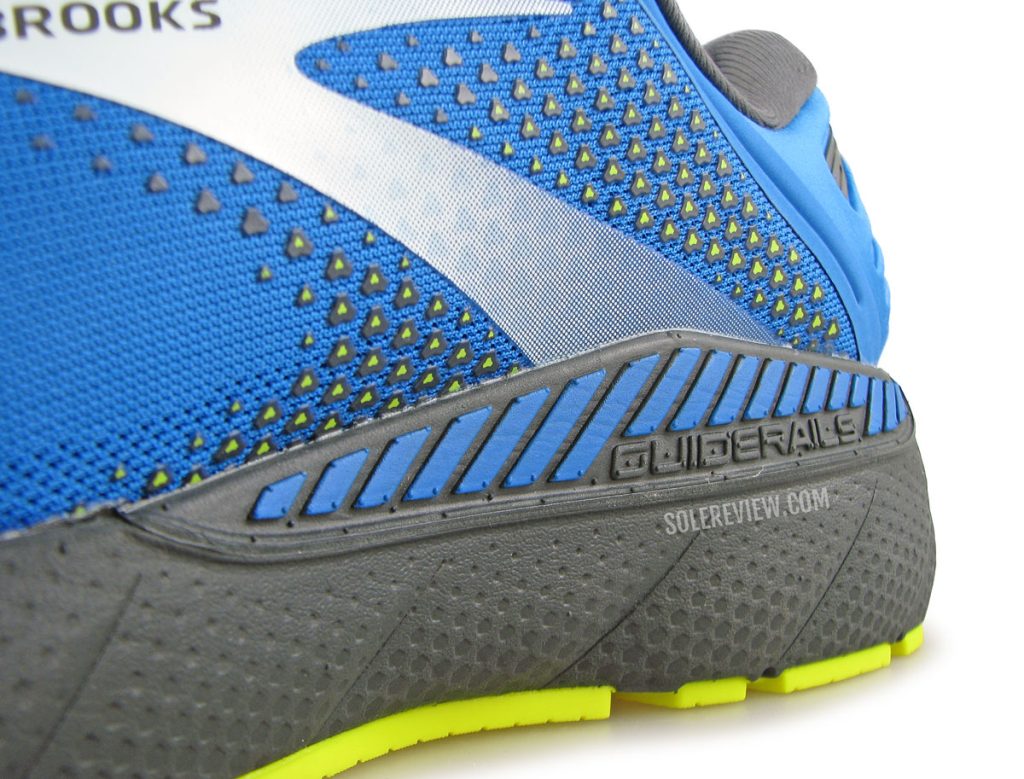
We’ve been privileged enough to speak with thousands of readers and have found one thing: you don’t need a stability shoe if you’re flat footed.
It is widely accepted that if you don’t have arches in your feet then you’ll be less likely to get injured while running. However, I’ve seen people with arches who also got injured while they were running.
If there was an authoritative study or peer-reviewed research that showed that flat-footed runners are more prone to injury than other types of running, then we would love to read it.
Furthermore, not all stability running shoes work the same way. The Brooks Adrenaline GTS 22 (review here) operates differently than the Nike Structure 24; while they both differ from an Asics Kayano 28 or Saucony Guide 15. And so on.
The very first running shoe was created in the 1980s during a time where people were just starting to get into sports. Most sneakers were made with cheap components such as glueing mesh fabric onto a piece of low quality foam and covering it up with rubber.
All runners flex their feet inward no matter how high or low their arches are and some flex them more than others. This led to the midsole of certain running shoes becoming flat on one side because of pressure from the runner’s foot.
This lead to the invention of different stabilizing gadgets and support systems on the inside part of the midsoles.
The high rate of injuries at the time – made worse by shoes that weren’t designed well for running – resulted in the idea that having flat feet (or over-pronating) leads to getting injured.
Flat feet are often thought to cause an individual to roll their foot inward, leading to the conflated assumption of causation between the two conditions.
In summary, the entire idea of pronating or creating stability through medial posting is a 70’s-80’s thing influenced by valid theory at the time.
Modern running shoe midsoles are vastly technologically advanced – both from a design and material standpoint.
Standard neutral running shoes, such as the Brooks Ghost 14 or Saucony Ride 15 offer high levels of inherent stability. Additionally, many contemporary foam materials will outlast other aspects of the shoe for a longer life span.
1) ‘Motion control’ shoes with firmer medial (inner) and softer lateral (outer) midsole sidewalls.
Asics Gel-Kayano 28
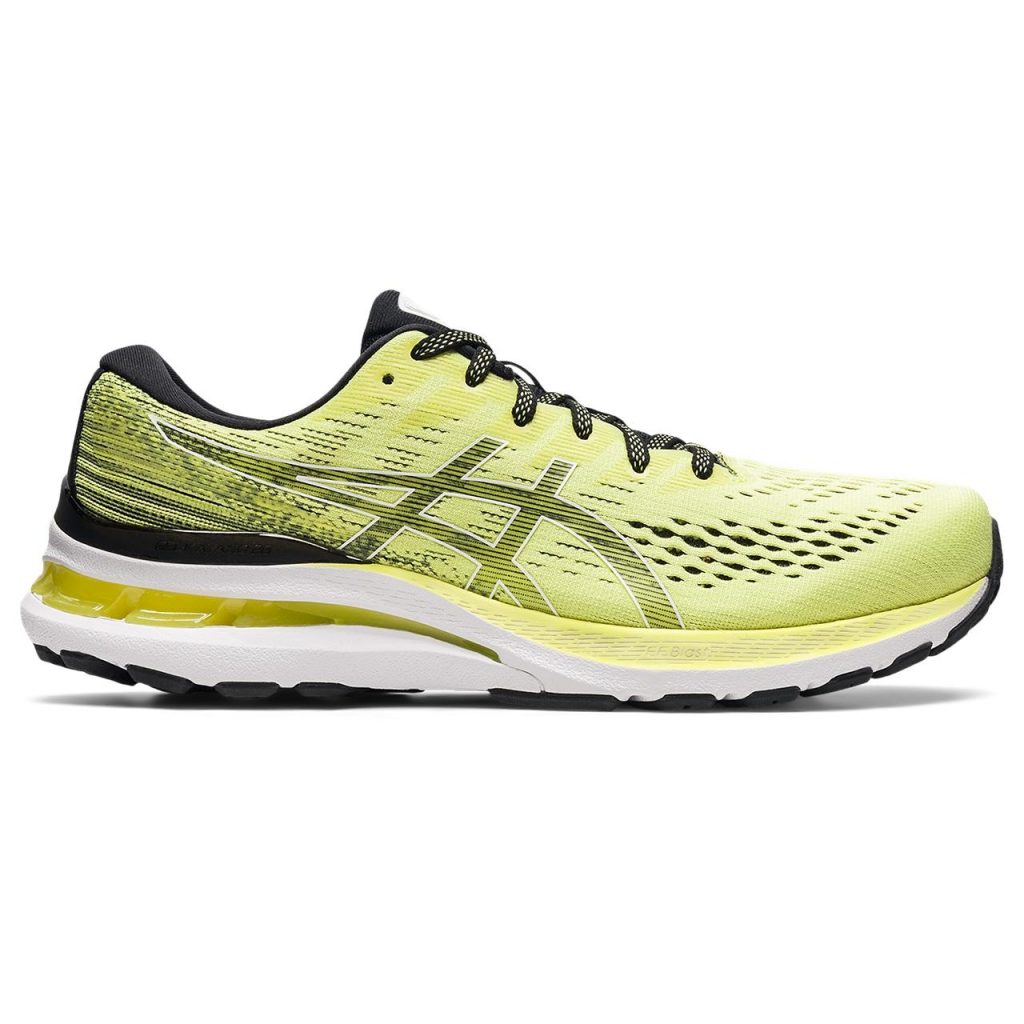
Though the Asics Gel-Kayano design has not met every latest update in running shoes, it is quite different from what was seen from the Kayanos of 2012-14. The firmer medial post shrunk in size, thus nudging the Kayano closer to being neutral cushioning territory with each passing year.
And yet the Kayano 28 still retains some of its original features, such as the firm wedged and plastic reinforced midfoot. If you are looking for a traditional stability shoe with an old-school feel – this would be it.
The use of a flexible plastic bridge within the shoe provides stability and strength to the mid-foot region. On the Kayano 28, Trusstic technology has been moved up in order to provide additional support for runners while they transition.
Considering the Gel inserts which are placed in between two denser foam layers, it is obvious that this shoe has a slight bias towards being soft.
Though the Flytefoam Blast forefoot is softer than the 27, it is supportive and easy to manage. As a whole, the Kayano 28 is comfortable enough for daily runs or long-distance races. Being an 11-ounce shoe, this model isn’t best used for speed training programs or short races but unhurried runs.
The uppers of this shoe come in many different widths and run true-to-size. The heel is made up of two pieces for additional support, as it contains a molded plastic clip on the outside.
Though the Kayano is a general unisex shoe, there are some slight distinctions between it and its male counterpart. The women’s version is 2mm thicker in the heels and 1mm taller at the front-end. With an overall stack height of 24:11 mm, this gives it a 13mm difference from heel to toe – or three times that of its male counterpart.
Asics Gel GT-2000 10
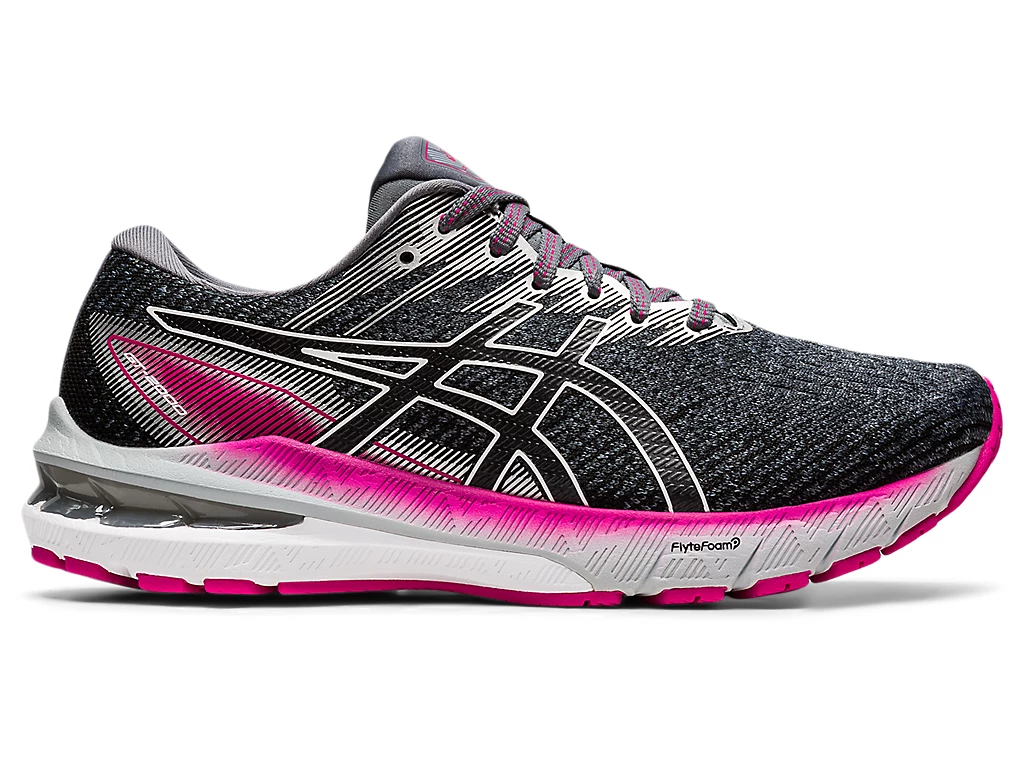
The GT-2000 10 is what somebody buys if they want a shoe that has similar features to the Kayano but at less of a cost.
In lieu, the 2000 offers a lighter-weight version of the Kayano while still maintaining its comfort and versatility.
Last year, the GT-2000 10 was modified to include milder stability features. One of these improvements being that the plastic midfoot shank has been covered up by the outsole rubber. To learn more about this and other design changes, check out our detailed review where we provide you with images and information.
This is also the first time Asics does not emphasize the Duomax medial post on the GT-2000. In its place is a solid midsole with raised sidewalls – a trend that Brooks Transcend brought to mainstream seven years ago.
Because of these changes, the GT-2000 10 offers a flexible and stable ride. I must mention that the cushioned midsole design is meant to make it softer than the Kayano 28. While this shoe is supportive in its entirety, my feet experience a soft sensation at the forefoot and rear.
However, the GT-2000 wasn’t without its own set of flaws. Inside the shoe was a medium density foam piece (Flytefoam) which left the inside of my foot feeling stiffer than when there was an area where gel cushioned my toes.
Asics applies Urethane reinforcements in key areas such as the heel and midfoot to make the shoe more durable.
The rest of the upper has a standard Asics design, which means it features engineered mesh with a smooth inside and plush padding. Heel and tongue are secured thanks to the cushioned materials used in its construction.
Though the women’s GT-2000 10 has the same 10 mm offset as the men’s model, it is 1mm shorter from top to bottom.
2) True stability shoes with a supportive ride quality.
Saucony Tempu
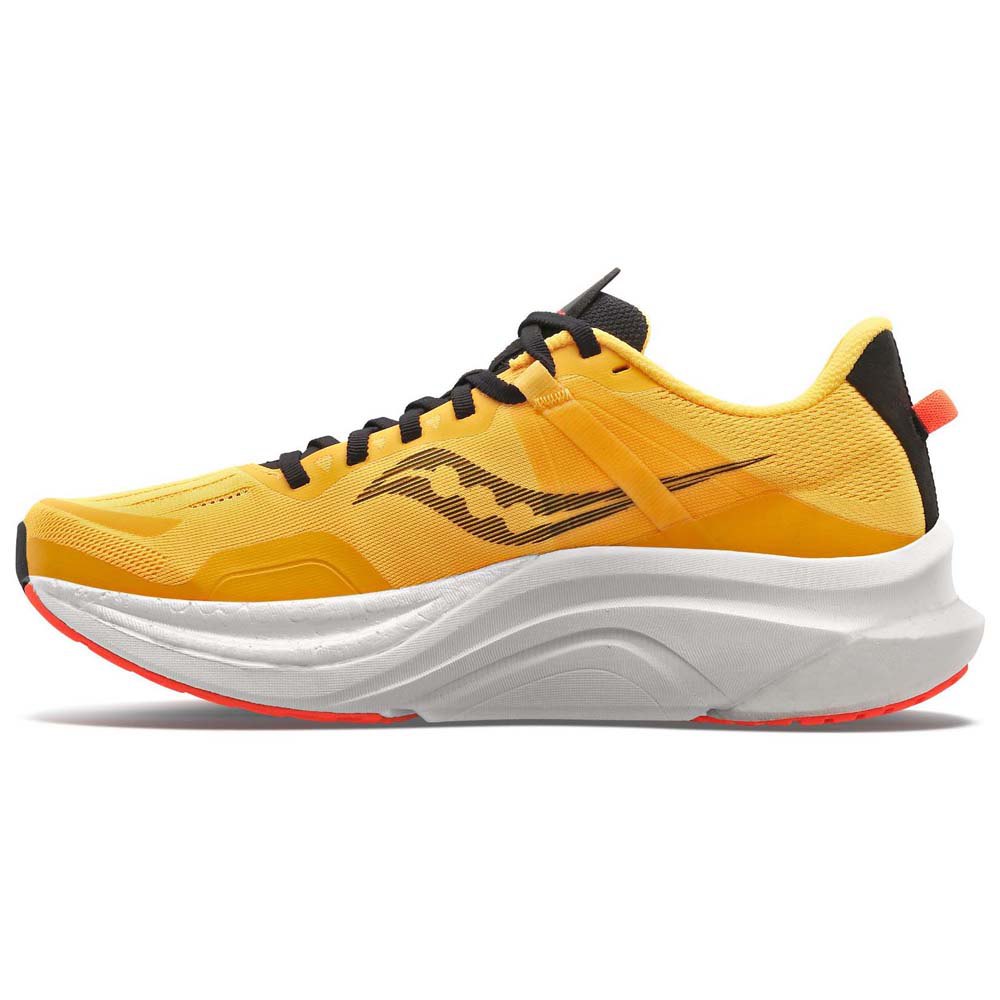
Saucony has a reputation for borrowing the best ideas for running shoes from other brands and making it their own. The Endorphin Speed and Pro models are perfect examples of this, as well as the Everun model which Saucony called Pwrrun+.
The Tempus is clearly inspired by the Adidas Sequence Boost, but it’s a more competent and improved running shoe. The solid EVA support locks over the padded PRWRN PB (PURPA foam) midsole to produce an intriguing mix of relaxation and equilibrium.
Though the inside of the shoe is more supportive, there is no bias. This is great news for runners who are looking for a supportive yet lightweight option – one that can be used comfortably on any run.
The upper part of this shoe is extraordinarily breathable, while also being lined with soft materials for interior comfort.
Saucony Guide 15
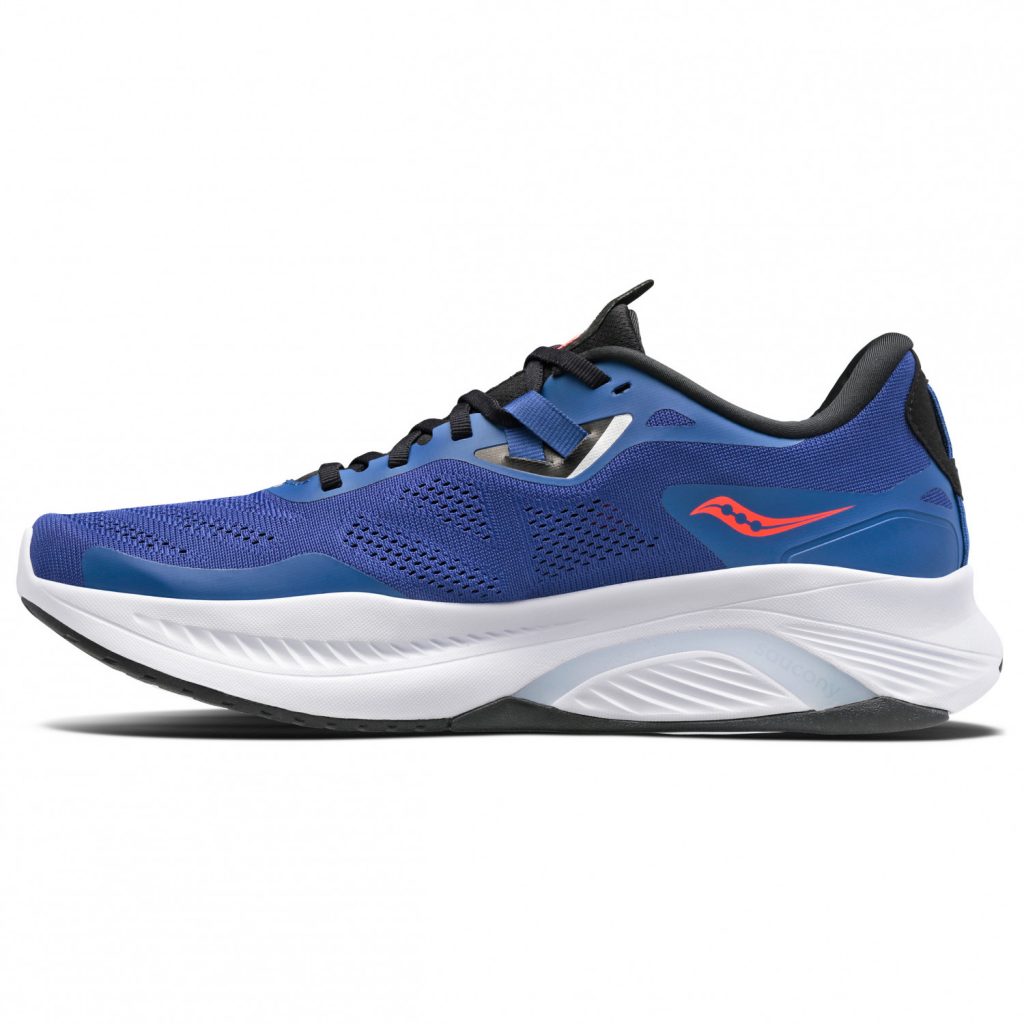
The Saucony Guide 15 has received many improvements from its predecessor, the Guide 14. Among these are a new shoe construction that is more durable and comfortable than before; this includes it being 2mm taller.
Not only does this shoe offer a thick insole made from an expanded polyurethane foam- like the kind used for adidas Boost shoes – but it also has excellent arch support.
The full-sleeved upper is silky yet snug, making for a comfortable fit. And unlike the previous version, this one feels softer and breathes well due to its lightweight design – almost like Kinvara shoes!
The midsole is cushioned for long-distance runs, but still offers enough support and stability. The internal medial post has been replaced with a plastic stabilizer to provide necessary stability without sacrificing comfort during longer distance running.
Lastly, the latest edition of the Guide has a new type of groove designed to center the weight during the gait cycle.
New Balance Fresh Foam 860 V12
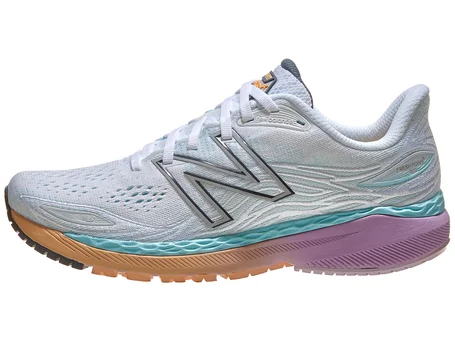
The Fresh Foam 860 V12, based on the same fresh foam technology found in its predecessor, delivers an identical riding experience.
Speaking of which, the firm triple-density midsoles make the ride coddled and balanced. The firmer wedges seamlessly melded into the rest of the shoe, providing comfort to most running patterns.
A combination of tough and flexible rubber on the sole provides traction while maintaining a smooth ride. With its firm base, this shoe can handle fast paces without giving up responsiveness.
What we liked about the 860V12 was its updated upper.
The new 840v8-V12 shoe features an improved heel collar and forefoot. The heel collar no longer features the single flare at the front, while there is no separate panel for the middle of the foot on the v11. This allows for a smoother ride without sacrificing comfort or support.
In conclusion, the New Balance Fresh Foam 860V12 is a multifaceted athletic shoe that will meet most running needs.
New Balance Fresh Foam Vongo V5
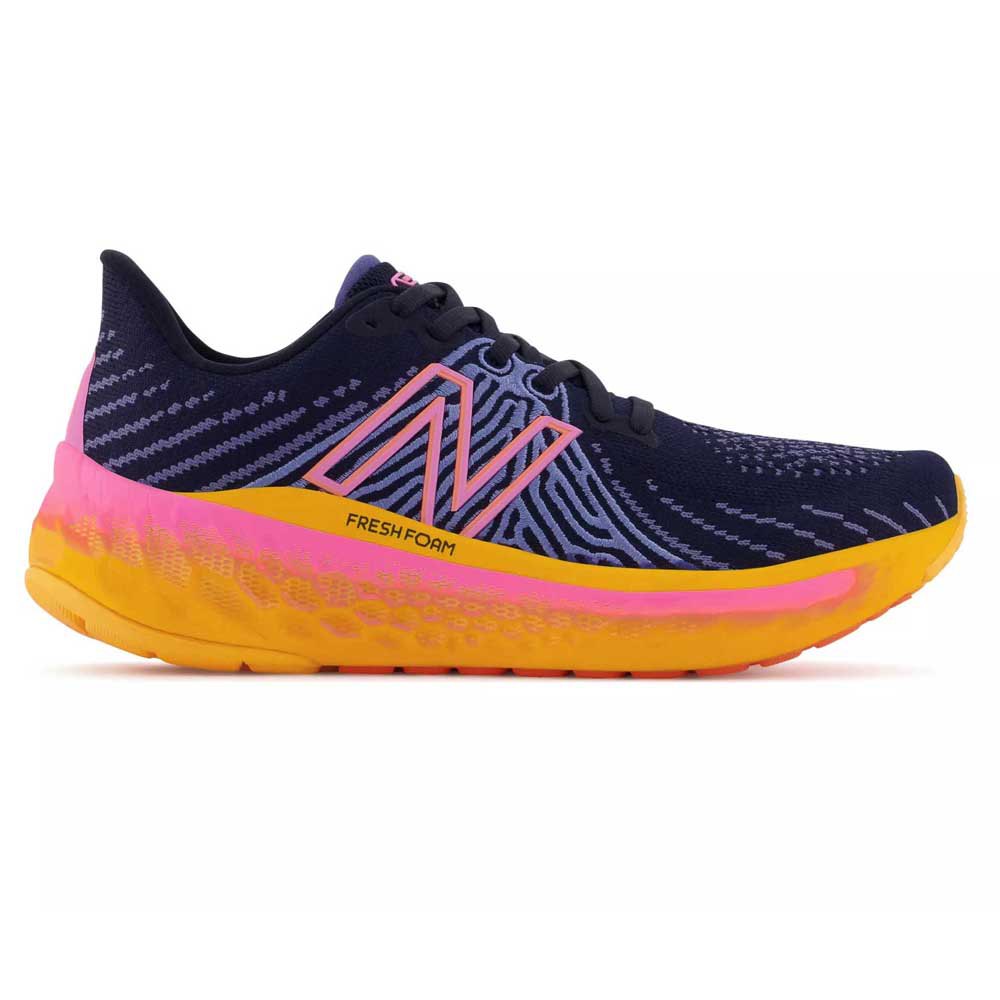
Until the most recent version of the Vongo, it wasn’t your traditional stability shoe. It was cushioned and supportive without having a medial post yet had a low drop. The shoes were lightweight and had a deep tread to keep them centered while they were being used.
On the Vongo V4, the inner midsoles are designed to provide more support and an increased comfort level of stability. The outsoles are laser-cut with a slightly higher amount of padding at the heel for that smoother ride.
Not sure why New Balance changed its mind, but the Vongo V5 was fitted with a firm medial post for the first time ever. It was obvious that it has never been fitted with one since there was a large hole present on the inside part of the shoe on the midsole.
The Vongo V5 provides plenty of medial side support in addition to a cushioned ride due to its thick, comfortable foam midsole and articulated outsole which both contribute to an enjoyable distance-friendly ride experience. Its soft blown rubber footpads are great for absorbing impact during landing and takeoff, while also providing supreme cushioning all over with soft protection around your feet that is lightweight enough so it doesn’t interfere with your stride.
After New Balance’s infatuation with an unorthodox heel design – they have now thankfully returned to a more traditional type of shoe cup.
The Vongo V5, like many new NB releases use a uniquely-textured and textured fabric for the shoe’s exterior. The interior of this shoe locks you in place with plenty of support while providing immense comfort.
3) Cushioned shoes with arch support. These models have a filled-up under-arch area or high midsole sidewall.
Brooks Addiction GTS 15
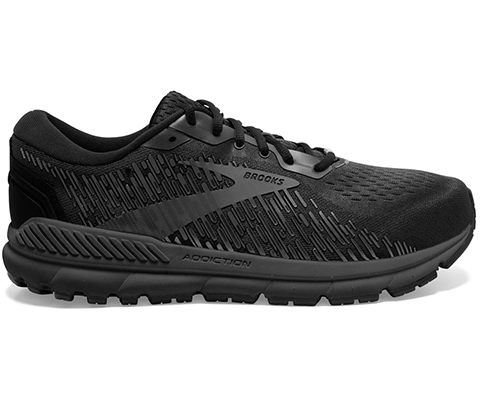
As a replacement or successor to Brooks Beast 20, the Addiction GTS 15 delivers.
Like the beast, this shoe offers an ultra-cushed fit thanks to its ‘guiderails’. They make it ideal for flat-footed runners who require loads of arch support.
Hypothetically, the Guiderails are lost in transit. This shoe is designed with a wide midsole for stability regardless, thanks to its broad forefoot and heel which results in a steady walk. There are no deep grooves on the rubber outsole so you won’t slip or lose your footing as you’re walking around town.
This shoe comes with an extra-thick insole that can be removed to accommodate an aftermarket orthotic. You’ll love the sleek and snug fit of this animalistic shoe, which feels as wild as its name suggests.
Brooks Adrenaline GTS 22
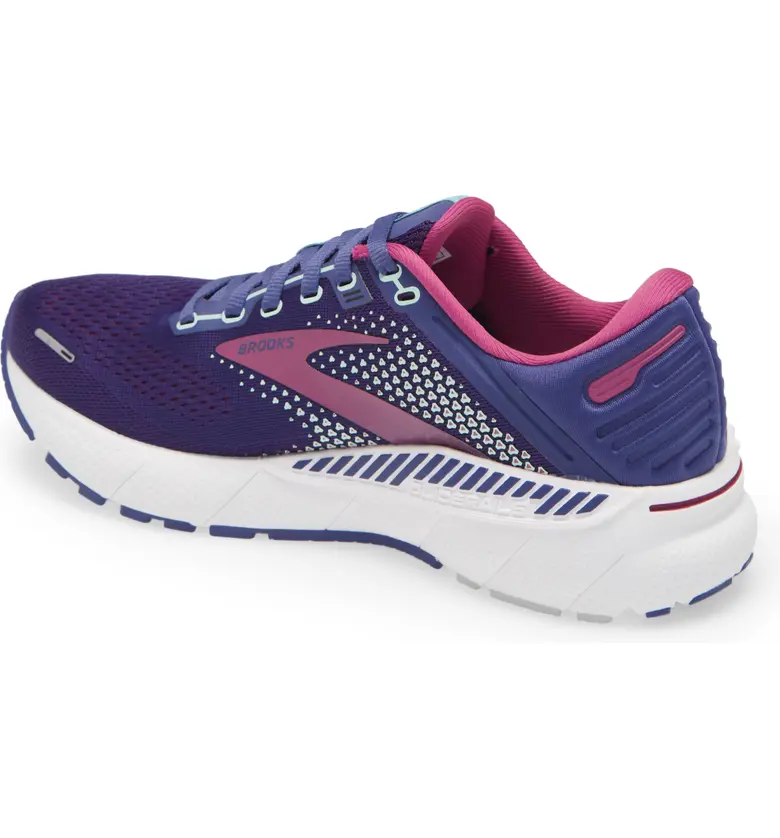
They removed the medial post and introduced Guide Rails which are just elevated side walls running along the midsole. This put them out of the stability shoe game.
As the GTS 21 turned 21 last year, it came full circle. In addition to softening, it did away with the heel crash pad.
Just like the Brooks Ghost 14, the Adrenaline GTS 21 had a single-density midsole from heel to toe. With only one exception – an inner guide rail made of firmer foam for under-arch support – it consisted entirely of softer material than its counterpart.
The Adrenaline GTS 22 boasts some notable upgrades from its predecessor, the GTS 21. The midsole has been updated for a firmer feel and the new inner Guiderail secures your foot without slipping or jostling when you run.
We view this as both an advantage and a disadvantage. On one hand, the sturdier foam underneath improves stability while wearing them. On the other hand, the firmer foam piece underfoot creates a pressure point which can become uncomfortable after prolonged use.
In spite of the new and improved sole, these sneakers are still comfortable enough for everyday wear or cross-country traveling. The thin yet soft padding beneath my feet helps me stay agile with every step while simultaneously absorbing shock from hard landings.
The full rubber outsole clutches onto surfaces well. They work harmoniously with the midsole for a perfect combo of traction and stability.
There’s a heightened level of comfort within the upper that fit my foot perfectly. Unlike the Ghost 14, the GTS 22 had additional padding around its tongue which made it even more comfortable than before.
4) Supportive neutral shoes
Supportive running shoes from the neutral category are also worth considering. Many models blend cushioning and support, and will work well for most runners regardless of their gait pattern.
Asics Kayano Lite 2
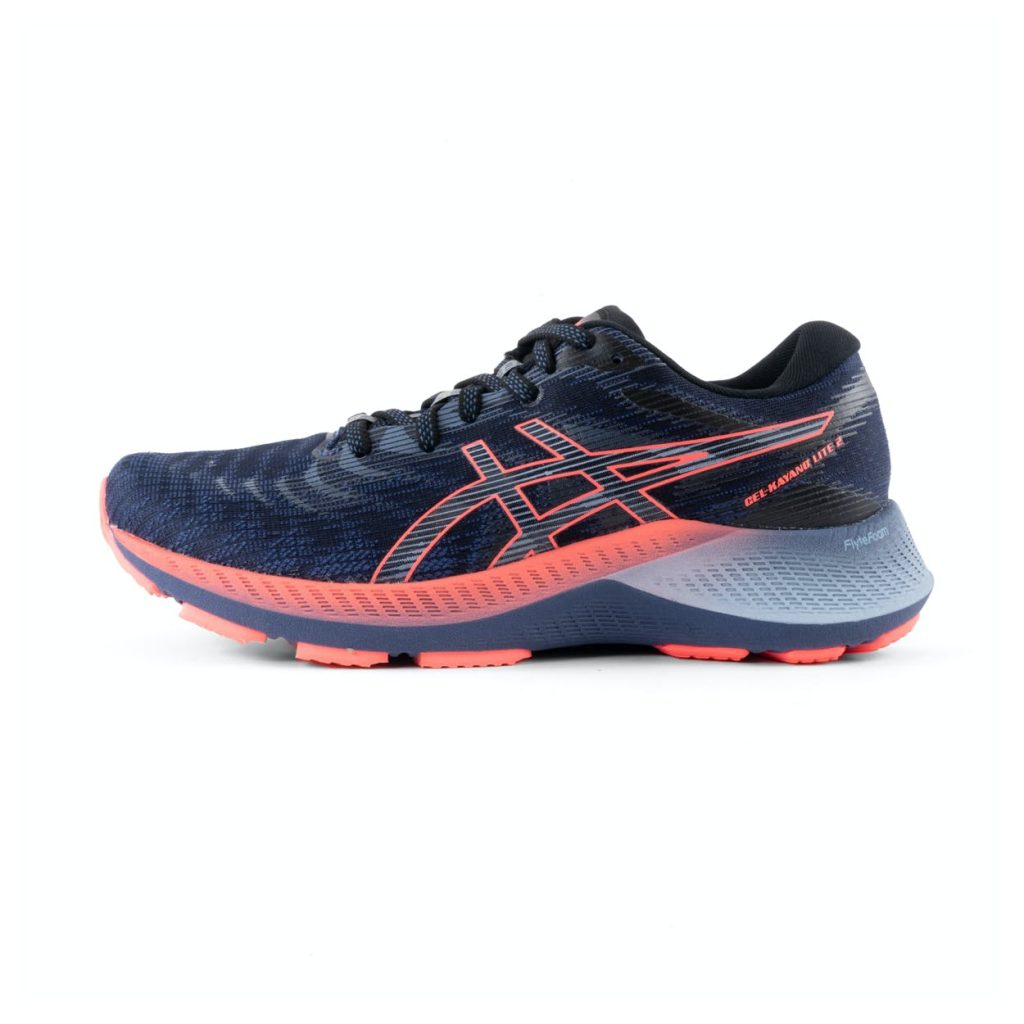
Do not pay attention to the Kayano name. Even though the Kayano Lite 2 shares its namesake with the medial postioned Kayano 28, they do not share much in common. Perhaps only their plush uppers resemble one another – if anything at all.
There’s a reason why the Asics Kayano Lite 2 is grouped under the ‘supportive neutral’ section of this guide. It was designed for its stability and comfort, which you can feel in every step you take.
One can’t deny the comfort that one feels when they walk in Flytefoam sneakers. Because of the wideness of these shoes, it separates you away from the pavement beneath you while still being durable and comfortable at all times.
The Kayano Lite V1 and V2 are nearly identical with regards to the midsole which is shared between both models. Therefore, our detailed review of the Lite V1 will still prove useful for those interested in these shoes.
Nike Air Zoom Structure 24
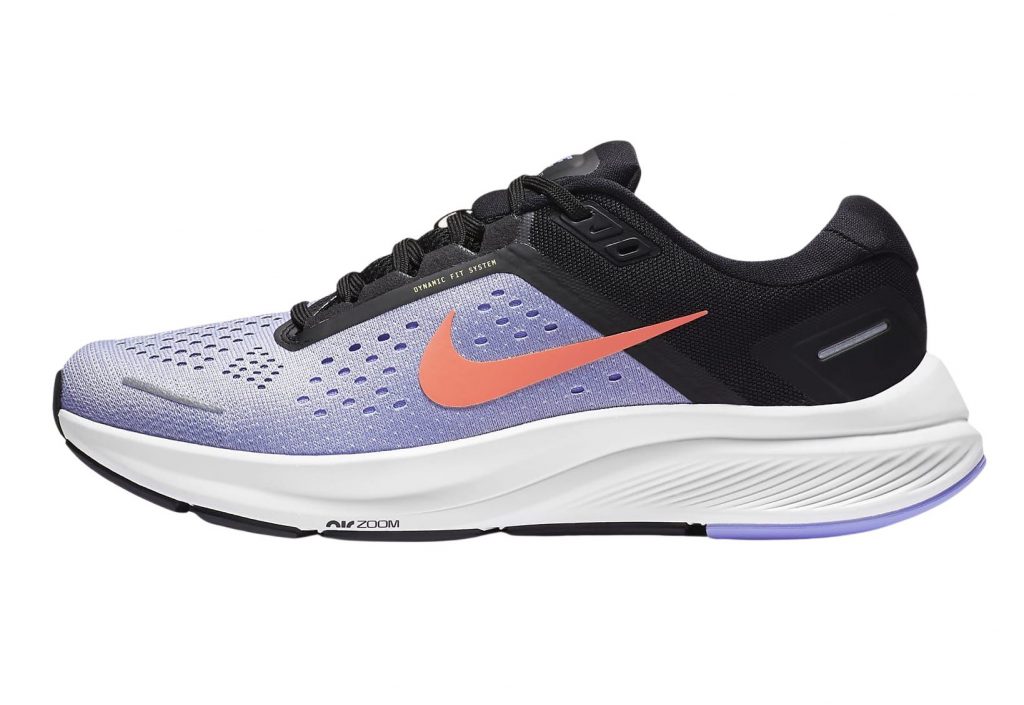
When the Nike Structure 23 arrived last year, it did so without the medial post that the 22 had. It also created a drastic change to its shape and features – turning into a much softer running shoe. But don’t worry! The Nike Structure 24 is nearly identical to the 23 – just softer.
Both of these Passages are almost identical, but one sentence is poorly written. We will write an in-depth analysis of what changes were made so you can decide which to read.
The gist of it is that while the Structure 24 may not be as good of a running shoe when compared to other shoes, it has one major advantage – its wide midsole and snug upper.
Which is why so many people are shifting to regular neutral shoes, like the Pegasus 39 or Vomero 16. These types of trainers provide stability with all-day comfort – perfect for those who want both support and style without compromising one for the other.
The Medium-Soft Ride (including the snappy Zoom Air Forefoot) of the Structure 24 makes this shoe highly versatile – making it perfect for everyday training, slightly higher paced runs, or even high mileage outings.
In this style, your foot is held in place by a lavishly quilted sleeved upper.
Conclusion
A podiatrist, physical therapist, or running shoe specialist is an excellent resource to discuss running shoes for flat feet and try on several styles.
When you use this guide as a starting point, we know you’ll find the right shoe for your foot.

